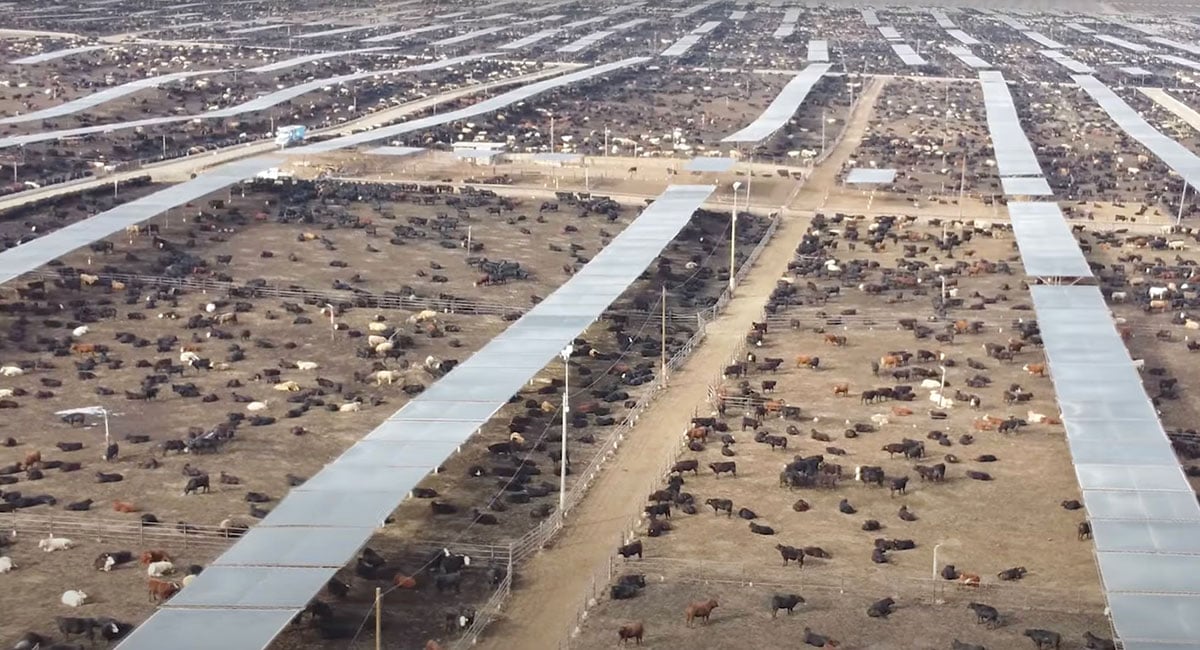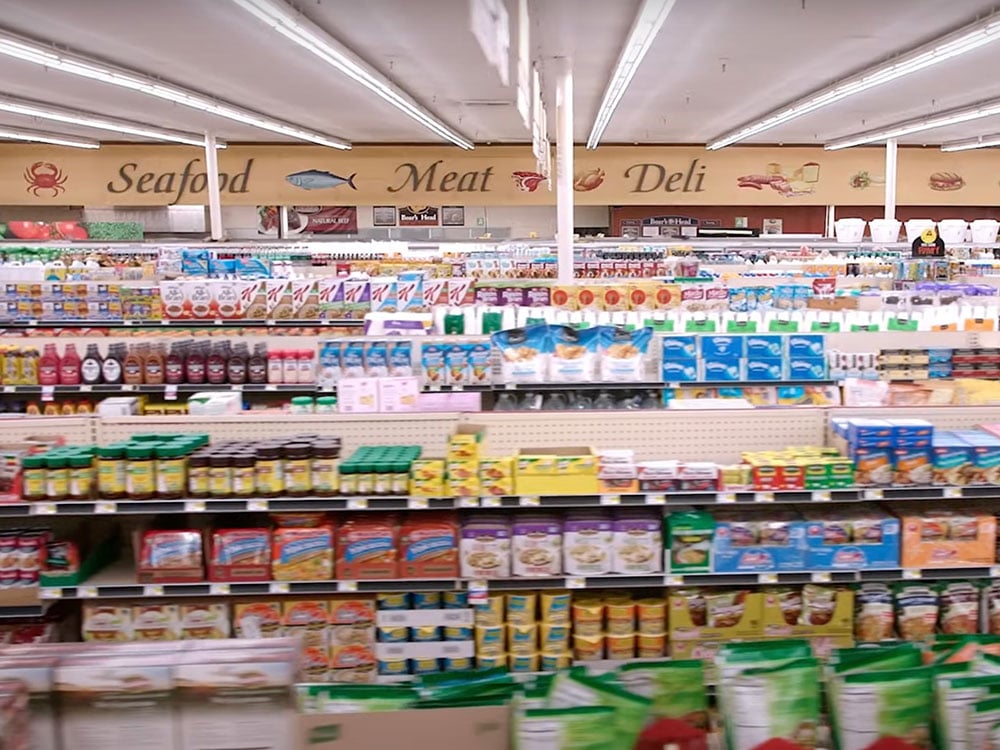When it comes to food production in North America, it’s a little like two steps forward and 10 giant leaps back. Food, Inc. 2, from filmmakers Robert Kenner and Melissa Robledo, makes this dance abundantly clear. As the followup film to the impactful 2008 documentary Food, Inc., the current second iteration pulls back the lens and considers the systemic forces that drive how food is made.
“Although the pandemic was the catalyst, the film soon became a much wider exploration of the major issues in our food system such as unchecked monopoly power — and the dangers it now poses to workers, to consumers and ultimately to our world,” Kenner and Robledo explain in a press statement.
“The chaos wrought in supply chains by COVID-19 made explicit just how fragile the contemporary food system really is. Add in continued corporate consolidation, grocery conglomerates’ record profits, in both the U.S. and Canada, and it looks like things might have gotten a little worse, despite the purported growth of the ‘food movement.’”
Kenner’s 2008 documentary Food, Inc. took as its subject the little-known aspects of industrialized food production. An exhaustive and encompassing investigation, it was so slickly produced that the effect was a little like slurping down a well-mixed cocktail of hope and horror — slick and glossy, but a tad unsettling to the stomach.
Journalist Michael Pollan (author of the 2006 book The Omnivore’s Dilemma) was one of the key figures in the first film and is again a central interlocutor in Food, Inc. 2, along with Eric Schlosser (author of the 2001 book Fast Food Nation). They’re joined by a diverse collection of farmers, ranchers and U.S. politicians. The tone is similar to that of the first film, kicking things off with a bleak summation of how things have been going before ending with a wee bit of positivity.
But before getting to the happier bits, one must wade through fields of ick.

Protecting profits over public health
The film takes us back to the early, awful days of the pandemic, when outbreaks of COVID-19 in meat-packing plants attracted the attention of the filmmakers. In April 2020, then American president Donald Trump used the Defense Production Act to keep slaughterhouses and meat-packing plants open and workers on site despite the risks. Intensive lobbying as well as some political chicanery was behind the Trump administration’s decision.
“The meat-packing industry pretty much wrote the executive order President Trump issued,” Schlosser explains. “At a time when doctors were running out of protective gear and nurses were wearing garbage bags in hospitals, Trump was fixated on protecting the profits of a handful of food companies.”
Schlosser was following the story for a feature essay he published that spring in the Atlantic entitled “America’s Slaughterhouses Aren’t Just Killing Animals.”
His work revealed that the price paid by meat packers to keep the supply chains well supplied was only the tip of the iceberg. In addition to brutal working conditions in which workers were not allowed to leave the line even when sick, protective gear was negligible, and people were working in extremely close quarters. As COVID-19 seeped from factories into surrounding communities, the virus spread like wildfire.
And slaughterhouse workers weren’t the only ones who were adversely affected. Fast-food restaurant employees, grocery store clerks and farm labourers who were designated as essential workers took the brunt of the pandemic’s first onslaught. That the people at the very bottom of the socio-economic ladder were charged with keeping the country functioning is another painful reality.
As dire as the pandemic was, it revealed even larger and more systemic issues — namely that food production in the United States is controlled by only a handful of companies. The system was brittle and prone to catastrophic failure, as made evident by the shuttering of one American factory that produced infant formula. The resulting shortages were massive. Food, Inc. 2 includes footage of desperate parents stalking pharmacies and grocery stores in search of formula and finding only bare shelves.
The film expends a good section of its narrative on explaining how antitrust laws in the United States originated, and how their undoing let loose the monopoly floodgates. As larger corporations have continued to consolidate, devouring their smaller competitors, the tent poles of power and profit hold up the entire sagging tent of food production.
It gets still worse.
Out of the frying pan, into the vat of plant-based protein
As the film explains, the impacts of ultra-processed food on the human body present a possibly even wider-ranging nightmare than those posed by the early pandemic years. The adage “You are what you eat” takes on another level of complexity with ultra-processed food.
The list of additives in a bag of nacho cheese-flavoured chips requires a degree in chemistry to fully understand what one is ingesting. But it’s nastier than just empty calories. Ultra-processed foods trick the brain into thinking that the things we’re eating have fewer calories and nutrients than they do, making us eat more of them. A cornucopia of health conditions is the result, from diabetes to obesity.
Even food products that seemingly offer alternatives to industrialized food are not as clean and green as manufacturers would have you believe. As people grow increasingly hungry for plant-based products, larger companies like Tyson have invested heavily in new technologies aimed at supplying the market demand. But non-meat products aren’t quite as marvellous as they might first appear.
In the context of investigating protein that is grown in vats and formed into a product that largely resembles chicken, Michael Pollan pays a visit to Impossible Foods, where he is served a chicken substitute. As he informs the camera, this option isn’t exactly what was advertised. Protein substitutes aren’t quite as readily available and cheap as the industry maintains. Vat-grown protein has a way to go before it can compete with actual chicken.
Meanwhile, more down-to-earth solutions, quite literally, are changing things on the level of topsoil. One example that marries ancient methods to contemporary technology is that of Iowan farmer Zack Smith, who left his job selling pesticides to launch his own solar-powered animal pens.
The contraptions involve goats, pigs and other ruminants not only eating weeds, but turning and fertilizing the soil as they go, while the solar panels on the roof of the pens provide sufficient power to motor through the fields. As Smith informs the filmmakers, he made the change because he wanted to wake up in the morning and feel like he was doing something more positive and beneficial for the world.

Hard to shake the sense of déjà vu
Whether it’s kelp farming, oyster harvesting or different kinds of farming practices, the efforts to posit more sustainable methods of feeding people, while hopeful, are still relatively tiny. Political action has also been slow to address the issue, despite the pressure exerted by U.S. senators Jon Tester and Cory Booker.
While the information contained in Food, Inc. 2 is critical, it’s hard to shake the feeling we’ve seen it all before. The sheer volume of documentary films that have addressed similar issues is huge. And here’s the problem with a film like Food, Inc. 2: certainly, it’s well made and filled with earnest, even plaintive interviews. But the moment the upbeat cheery music kicks in to signal there is some hope on the horizon, a certain flavour of cynicism sets in.
Artfulness matters, especially when it comes to communicating something as fundamental and urgent as the food supply chain. I’m not sure what the answer is in making terrible stuff easier on the palate, but the old-fashioned approach of adding a spoonful of sugar to help the medicine go down doesn’t really work anymore.
It’s an ongoing issue in non-fiction cinema. As any number of new documentaries about the sorry state of the world come tumbling out, darkness starts to oversaturate the view. I feel it myself while looking through upcoming programs for Hot Docs in Toronto and DOXA in Vancouver.
Even when you know the subjects covered are important, there is an impulse to think, “I can’t take in any more horror.” While documentary festivals struggle in a post-pandemic world, citing the difficulty in getting audiences back into the theatre, I can’t help but think that the ongoing onslaught of terrible news might be part of this reluctance.
How to leaven the heaviness without artificial sweetener? Maybe just straight up, no chaser? But that’s pretty bitter bread.
‘Food, Inc. 2’ is playing at the VIFF Centre in Vancouver on April 22. ![]()

















Tyee Commenting Guidelines
Comments that violate guidelines risk being deleted, and violations may result in a temporary or permanent user ban. Maintain the spirit of good conversation to stay in the discussion and be patient with moderators. Comments are reviewed regularly but not in real time.
Do:
Do not: